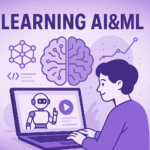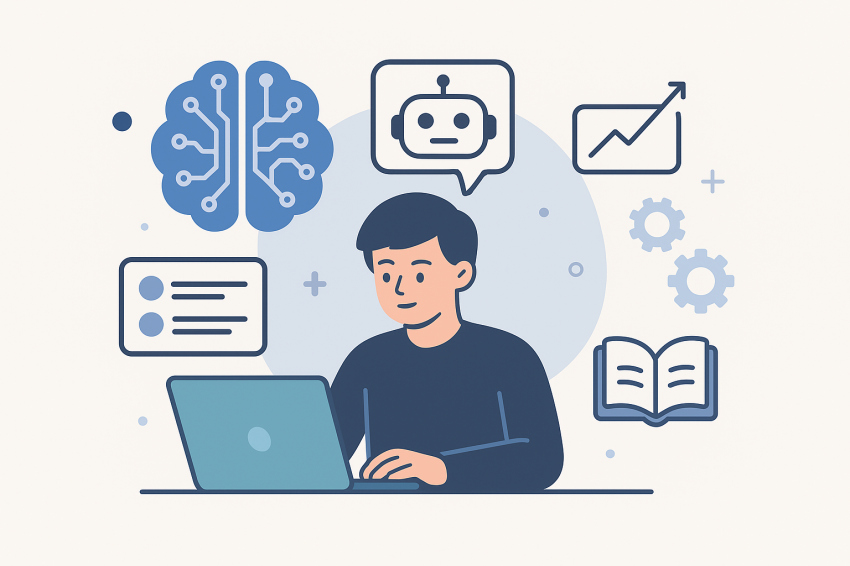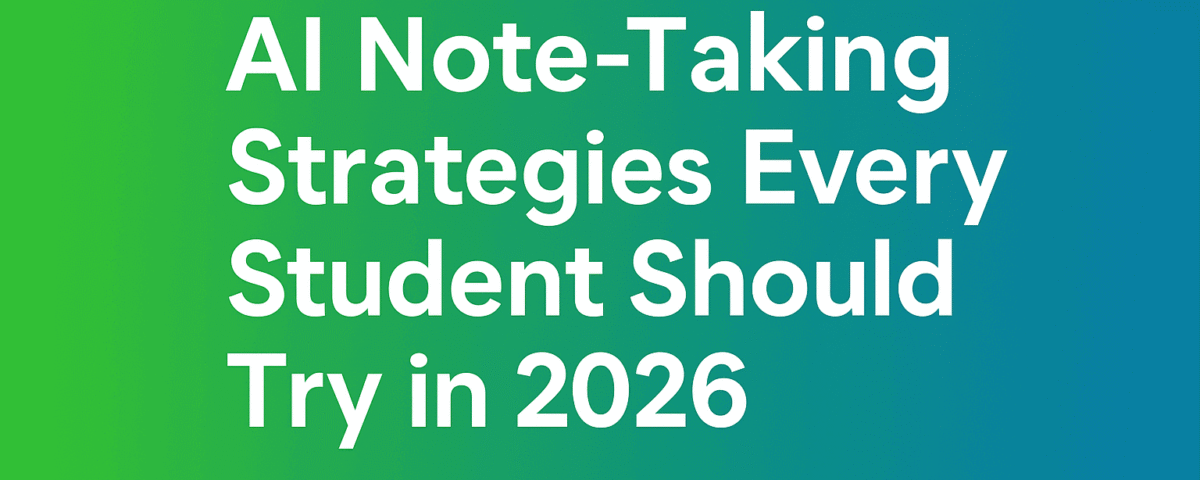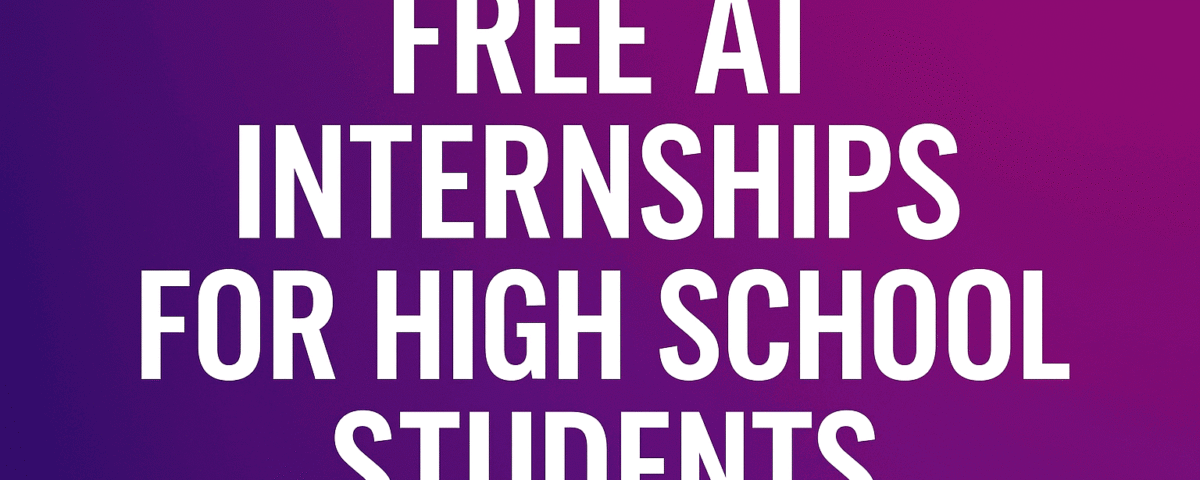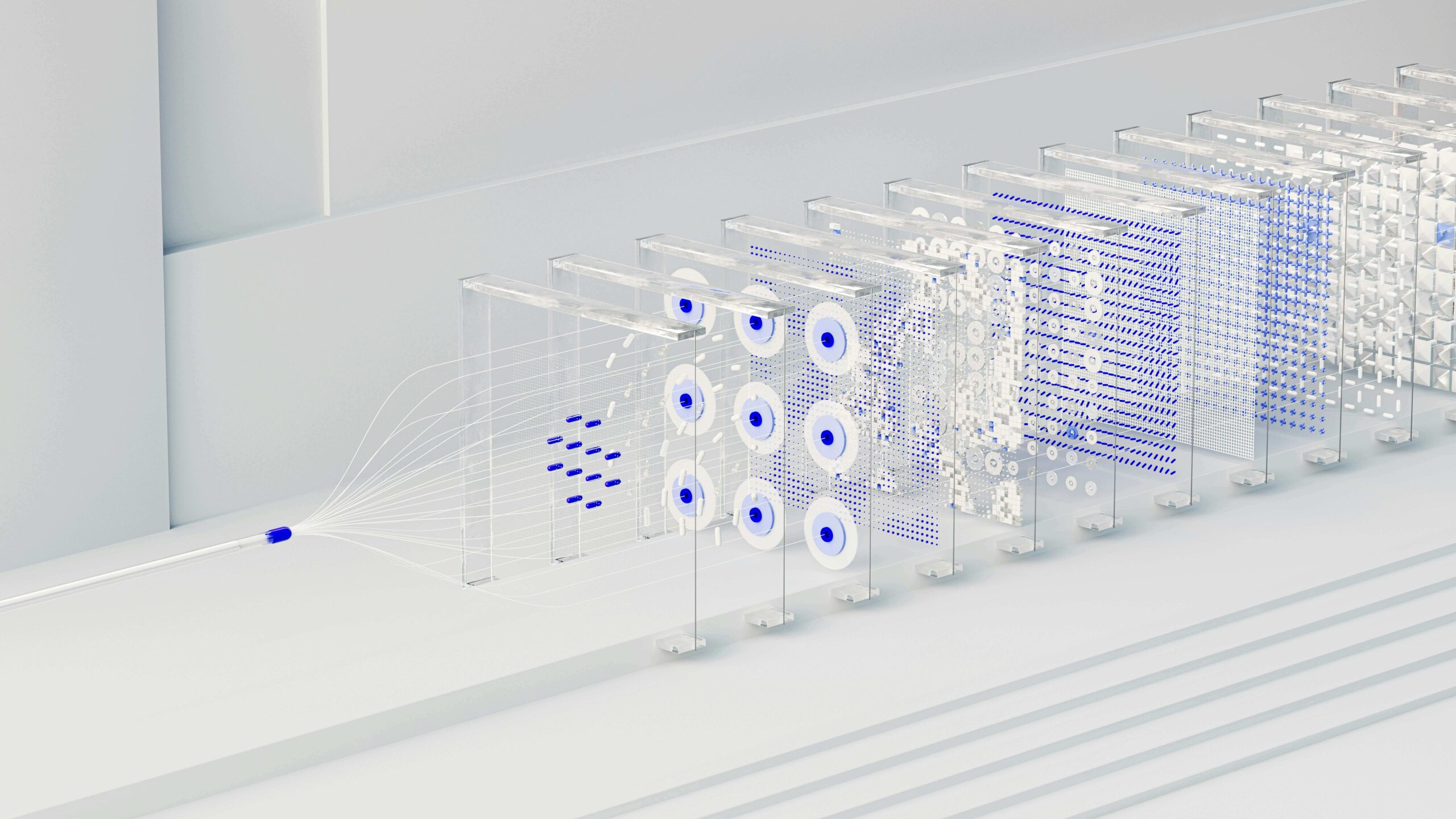Introduction: A New Chapter in Education
We live in a time when learning no longer depends only on books or classrooms. Artificial Intelligence (AI) has become a daily companion for students — helping them study faster, understand complex ideas, and even become more creative.
From grammar-checking tools to AI-powered tutors, technology now offers smarter, faster, and more personal ways to learn. The question is no longer “Should we use AI in education?” but rather “How can we use it wisely?”
Let’s explore how AI is changing learning, what tools can help you right now, and how students can prepare for this new era.
What Is AI in Learning?
Artificial Intelligence in learning means using smart algorithms that can understand, predict, and adapt to a student’s needs.
In simple terms: AI learns how you learn.
It observes your performance, analyzes your mistakes, and adjusts the lessons to fit your personal pace and style.
Examples include:
- Duolingo’s smart feedback system, which adapts to your language level.
- Coursera’s personalized recommendations, which suggest the right next course.
- ChatGPT or Gemini, which can explain concepts or summarize study materials instantly.
Instead of one-size-fits-all education, AI brings us customized learning experiences for every student.
Benefits of Learning with AI
1. Personalized Learning
Every student learns differently. AI tailors lessons, exercises, and quizzes to your strengths and weaknesses.
For example, if you’re struggling with math, an AI tutor can repeat key topics or explain them in new ways until you get it.
Tip: Use tools like Socratic by Google or Quizlet AI to get personalized study help based on your specific questions.
2. Saving Time and Increasing Focus
AI reduces repetitive tasks — both for teachers and students.
It can summarize long articles, organize notes, or even generate study plans automatically.
Try This:
Use Notion AI to turn your class notes into structured outlines.
You can even ask it to create a to-do list or study timeline for exams.
3. Real-Time Feedback
AI gives instant, data-driven feedback.
Writing tools like GrammarlyGO or LanguageTool AI not only fix grammar mistakes but also teach you why something is incorrect.
This constant feedback loop helps students learn faster and retain more.
4. Accessibility and Inclusion
AI makes learning accessible to everyone — regardless of background or ability.
- Speech-to-text helps students with hearing challenges.
- Text-to-speech tools support visual learners.
- AI translation allows students to access global content in any language.
AI ensures that education is no longer limited by borders or barriers.
Practical AI Tools for Students
Here are some of the most helpful AI-powered tools that students can start using today:
| Category | Tool | How It Helps |
|---|---|---|
| Writing & Research | ChatGPT / Jasper AI | Generate ideas, explain concepts, write outlines or summaries |
| Note-Taking | Notion AI / Otter.ai | Organize lectures and transcribe voice notes |
| Studying & Flashcards | Quizlet AI / Elicit.org | Create smart flashcards or find relevant research sources |
| Creativity & Presentations | Beautiful.ai / Tome.app | Design stunning slides automatically |
| Productivity | Motion / Reclaim.ai | Manage tasks, study sessions, and deadlines with AI scheduling |
Pro Tip:
Use AI tools to enhance your work — not replace it. Always review and rewrite AI content in your own words.
Real Examples of AI in Modern Learning
- Khanmigo (by Khan Academy): An AI tutor that teaches math and science interactively.
- Duolingo Max: Uses GPT-based conversations for real-time language practice.
- Coursera Smart Learning: Suggests the best next course based on your interests and performance.
- ChatGPT: Explains difficult topics, generates summaries, and even acts as a debate partner.
AI is quickly becoming part of everyday study life — like having a 24/7 personal assistant for learning.
Challenges of AI in Learning
Even though AI offers huge benefits, it’s not perfect. Students need to be aware of its limits.
1. Over-Reliance on AI
Relying too much on AI can weaken problem-solving skills.
AI should support your learning — not do the thinking for you.
2. Academic Integrity
Using AI to generate full essays or assignments can lead to plagiarism issues.
Always check your institution’s AI-use policy and ensure originality.
3. Data Privacy
AI systems collect data to learn and improve. Make sure the tools you use are secure and protect your personal information.
The Future of AI-Powered Learning
The future of education will be personalized, interactive, and global.
We’ll see AI mentors that understand emotions, virtual classrooms with real-time translation, and adaptive systems that learn with you.
But no matter how advanced AI becomes, human creativity and curiosity will remain the heart of learning.
Teachers will guide empathy and wisdom — AI will handle the technical side. Together, they’ll create smarter classrooms than ever before.
How Students Can Prepare for the AI Era
- Learn how to write effective prompts.
The better you ask, the better AI answers. - Develop critical thinking.
Don’t accept every AI output as fact — question, verify, and analyze. - Understand AI ethics.
Know where to draw the line between help and misuse. - Build a digital portfolio.
Show your ability to combine human creativity with AI productivity — that’s a top skill for future jobs.
Conclusion
We are not competing with AI — we are learning with it.
In the age of AI, the smartest students aren’t those who memorize the most, but those who know how to use technology wisely.
Artificial Intelligence is not replacing teachers or students; it’s amplifying what both can do together.
When used with balance, curiosity, and integrity, AI becomes not just a tool — but a true partner in education.


